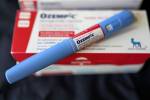Heart Catheterization
The choice should be an easy one to make.
In short, a cardiac catheterization monitors the blood flow to the heart. Think of it as a quick and efficient way to gauge how well your heart is pumping blood. The process -- as evidenced by its name -- is performed with a catheter. In an age where obesity and a lack of exercise are rampant among Americans, a coronary catheterization can be a godsend.
Dr. Michael Domanski, a cardiologist with the National Heart, Lung and Blood Institute, said a catheterization is a versatile procedure that can effectively pinpoint many major problems in the heart.
"Catheterization is good for people who may have blockages, people who may have had heart attacks," Domanski said. "We're trying to figure out if they have valve problems or not."
There are two main uses for a cardiac catheterization -- to investigate and evaluate. The investigation side is more of a preventative process. At that point when someone goes in for a cardiac catheterization,
they might not have knowledge of a heart condition. They may be getting the procedure done because of a doctor's recommendation or because they have symptoms of certain heart disease risk factors. The other side of the coin is the evaluative side. In these instances, patients already have a pre-existing heart condition and are using a cardiac catheterization as a check-up tool to gather the latest information about their condition. Because it is a rather quick and easy process, a person may go for several cardiac catheterizations in their lifetime.
Cardiac catheterizations were actually around for years before they became a staple in cardiac care. Around 1930, a young German surgeon was the first to use this process to examine the heart. He actually performed the first procedure on himself. It took a while for the procedure to catch on, and the young surgeon, Werner Forssmann, was finally awarded the Nobel Prize in medicine a quarter century after his discovery.
To administer a catheterization, doctors will find a spot in the arm or leg to insert a long but pencil-thin plastic tube. They enter the tube through an adequately sized vein or artery. Doctors then advance the tube into the heart's coronary arteries. The thing that makes this test so beneficial is that it provides an accurate picture of heart health. Or, it at least alerts doctors if someone's heart is unhealthy. A catheterization measures the heart's pumping ability to pump. It also provides details of how much oxygen is in the blood and the blood pressure inside the heart.
With so many instantaneous benefits, catheterizations are heavily relied on.
Dr. Iva Smolens, a renowned cardiothoracic surgeon from Arizona, said catheterizations are useful beyond the possible diagnosing of heart conditions. They also give strong indication on the next move for doctors and surgeons.
The procedure isn't just for older people at risk for heart problems. Domanski said that catheterizations are performed on everyone from the elderly to newborn babies, who may have otherwise undetected congenital heart defects.
"There are a variety of heart malfunctions that are treated with catheterizations," Domanski said.
Such a delicate process doesn't come without its risks. Complications can certainly arise during a catheterization, ranging from blood clots to even death. While dying from the procedure is very rare (far less than 1 in 1,000, Domanski said) a set of other side effects may surface. Heart attack, stroke and bleeding are all possibilities.
"There's a small risk of serious complication," Domanski said. "About 1 in 100 will have some form of complication."
The risks are greater for the elderly and infants. People who are older than 60 and babies who are not yet a year old face the greatest risk for death due to complications from a cardiac catheterization.
If the risk appears to be too much, there are alternatives.
The alternatives to catheterizations, however, don't always perform at the same level. Domanski said there is a dye that doctors can inject into the blood stream that will show up on a CT scan. While it's less invasive, Domanski said it's also less effective. This process is commonly referred to as a coronary angiography. Another similar procedure is called coronary angioplasty where a catheter has a ballooned tip. The ballooned tip is used to unblock clogged arteries in the heart to improve the heart's blood flow.
So who should look into a catheterization? Smolens said patients who complain of constant pressure and pain in their chest should talk about it with their doctors. Also, people who are showing signs of heart failure, coronary artery disease or congenital heart defects should all consult their doctor to see if a coronary catheterization is needed. Also, people with the aforementioned diseases and defects will often receive a catheterization to evaluate their heart's most up-to-date condition.
Snaking a tube into the heart is no easy task. However, Domanski said it's a tried practice that has been prominent for decades, so you shouldn't fret if you're in for a catheterization. Here's how it works: some 30 or 40 minutes before the procedure, you will likely receive a sedative to help you – and your muscles – relax. Patients are alert throughout the whole process, which takes anywhere from a half hour to an hour.
Doctors use a fluoroscopy, which is like a video version of an X-ray -- to navigate the tube up toward the heart. They will approach the heart from either side, and latch onto one of the heart's coronary arteries. Once that happens, they are able to take blood pressure and oxygen levels as well as heart pumping abilities.






















